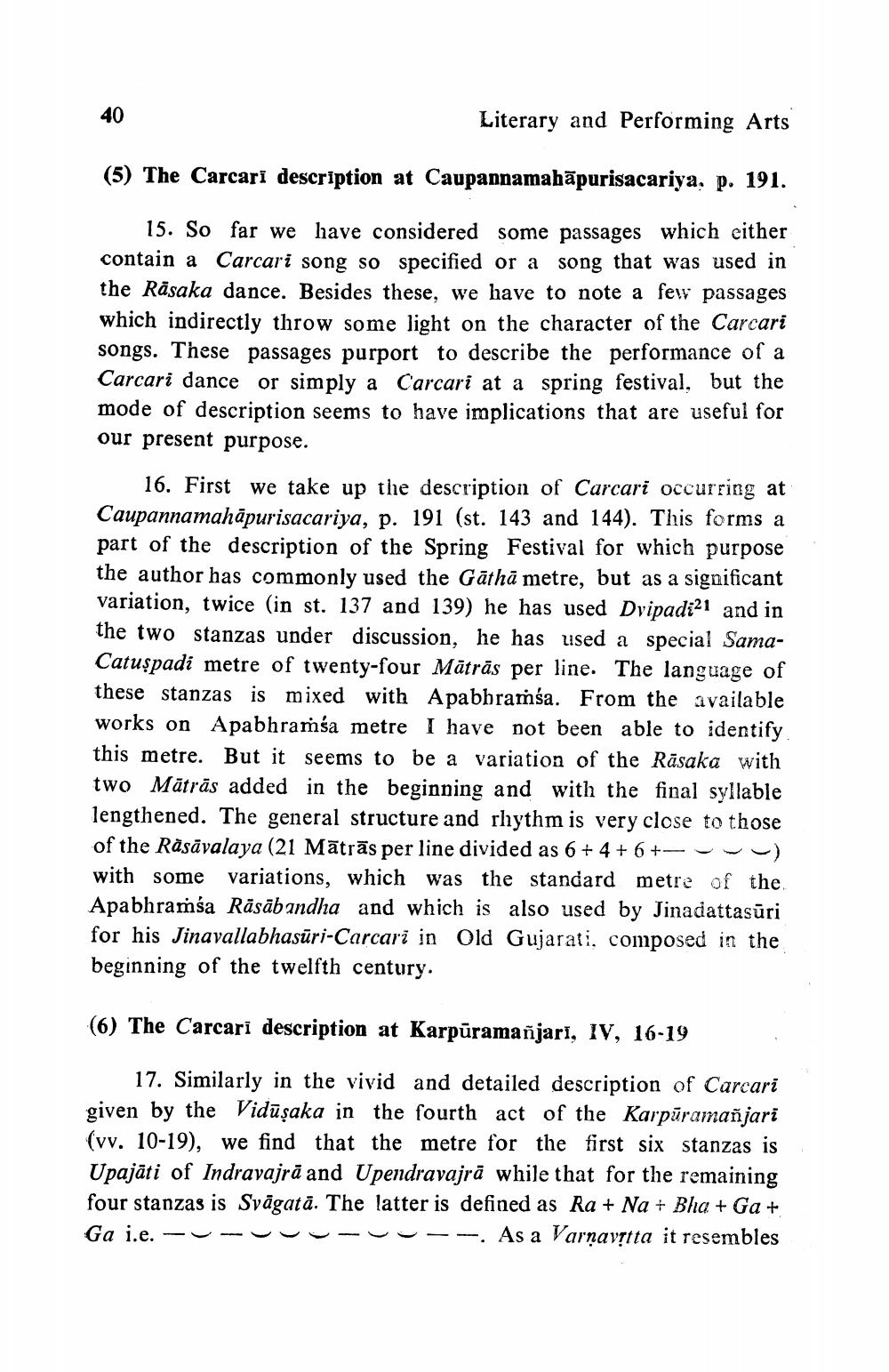________________
Literary and Performing Arts
(5) The Carcari description at Caupannamahāpurisacariya, p. 191.
15. So far we have considered some passages which either contain a Carcari song so specified or a song that was used in the Rāsaka dance. Besides these, we have to note a few passages which indirectly throw some light on the character of the Carcari songs. These passages purport to describe the performance of a Carcari dance or simply a Carcari at a spring festival, but the mode of description seems to have implications that are useful for our present purpose.
16. First we take up the description of Carcari occurring at Caupannamahāpurisacariya, p. 191 (st. 143 and 144). This forms a part of the description of the Spring Festival for which purpose the author has commonly used the Gāthā metre, but as a significant variation, twice (in st. 137 and 139) he has used Dvipadi21 and in the two stanzas under discussion, he has used a special SamaCatuspadi metre of twenty-four Mātrās per line. The language of these stanzas is mixed with Apabbraṁsa. From the available works on Apabhramsa metre I have not been able to identify this metre. But it seems to be a variation of the Rāsaka with two Mātrās added in the beginning and with the final syllable lengthened. The general structure and rhythm is very close to those of the Räsävalaya (21 Mātrās per line divided as 6 + 4 + 6 +-
) with some variations, which was the standard metre of the Apabhramsa Rāsābandha and which is also used by Jinadattasūri for his Jinavallabhasūri-Carcari in Old Gujarati, composed in the beginning of the twelfth century.
(6) The Carcari description at Karpūramañjari, IV, 16-19
17. Similarly in the vivid and detailed description of Carcari given by the Vidūşaka in the fourth act of the Karpīramañjari (vv. 10-19), we find that the metre for the first six stanzas is Upajāti of Indravajrā and Upendravajrā while that for the remaining four stanzas is Svāgatā. The latter is defined as Ra + Na + Bha + Ga + Ga i.e. -- -
- - ---. As a VarnavȚtta it resembles




